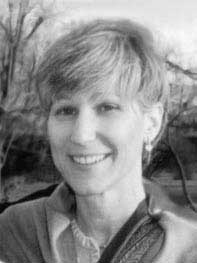In 1996 my novel, The Bride Wore Red was a Barnes & Noble Discover Great New Writers selection. It portrays a Punjabi family and the American women who marry into it. My second, Fifty-Fifty, was published this year at a press new to the publication of fiction, Silicon Press in Summit,, NJ. Plans are under way for the paperback, and the title story is in press in Screaming Monkeys, a collection of Asian-American writing to be published by Coffee House Press.
I am not Asian American. I was born and raised in New Jersey to a family of mixed northern European-Americans, about 1/32nd Native American. My first contact with a different culture was my dancing teacher, Gladys Kochesberger, who introduced me to French. I studied French as a fourth-grader in a very limited after-school program. In high school I began Russian, and I took my interest in Russian and French language and literature all the way to graduate school at the University of California, Berkeley. That’s where I met my husband. His language and culture-Punjabi-fascinated me. But it’s a very different exercise to live with a culture than to study it. One summer in the Soviet Union should have taught me that. Living as well as working with as diverse a collection of individuals as I can stand-something I’m committed to despite conflicts because of personal even more than cultural differences-has given me a wealth of stories I will never even begin to write. These stories, from the plausible to the delusional, have convinced me that in order to understand what life does to us, we have to make up stories. My books came out of a reaction to the changes that took place in me as I was welcomed into a large Punjabi family very different from my small, distant Anglo family. I don’t know whether I’ve written out that series of stories or not. A writer never knows what will obsess her next, much less what will be ready for agents and editors, what will be accepted and even if accepted, when it will be available to readers. I know this: at the moment I’ve exhausted my interest in writing about a culture that reflects only part of my experience, nor have I gotten much satisfaction lately from reading stories and novels about India and/or Non-Resident Indians. (Not that I’ve gotten any more pleasure out of reading contemporary fiction of any category. To be honest, I satisfy my urge for narrative these days with Law and Order (all three of them) and Buffy the Vampire Slayer.) I’m not sure what it is. I don’t think it’s the quality of the fiction. People keep recommending Manil Suri’s The Death of Vishnu, but I can’t explain why it could not keep my interest. And everyone loves John Updike. But me. One of the few books I finished last summer was Bharati Mukherjee’s Desirable Daughters. But I didn’t love it. Shyam Selvadurai’s Funny Boy I loved. Perhaps I’ve written through what most immediately obsessed me, and now I’m finally able to write about what has fascinated me my whole life. I’ve always thought of The Bride Wore Red as a satire of Americans, not an Indian book. Fifty-Fifty is one woman’s perspective on the American Dream. It helps to have immigrant characters to tell that story. And I just happened to have a cast of Punjabis from which to improvise scenes and scenarios. What interests me now, the culture I’m trying to understand (which feels increasingly “other” to me as it obsesses about dropping the “French” in fries) is the one that stole African rhythms from an enslaved people and their descendents and mixed them with European strings and English words. That music is more inspiration to me than literature these days. One of my former students, a man my age, married to a woman from Turkey, pointed out to me that one of the problems with a cross-cultural marriage is the lack of a common past-she does not know what it was like hearing Procul Harem’s “A Whiter Shade of Pale” for the first time with the counter-culture all around, offering up comfort from the imminent draft; and he will never fully understand what it was like to be a young girl in Turkey during those same cold-war years. I will never know, except through my imagination, what it was like eating Dusseri mangos in the heat of the summer or eyeing the neighborhood girls in their bright salwar kameezes in the streets of the capital twenty years after independence. It’s the readers, the publishing industry and what little media there is for writers in 2003 that label us as one thing or the other-or “fifty-fifty,” a combination of both. But in my observation, writers are not joiners. Very few of us identify ourselves as one thing or the other. Despite the loneliness of writing and a contradictory commitment to tradition, culture, and society, which sometimes comes across in our writing, we’re at our best when we’re alone, reclusive, trying to communicate in such an indirect way that it’s almost a miracle when someone reads us and puts us into a category. How does it feel to be writing South-Asian-American literature at a time of such abundance of novels, stories, and poetry either directly or indirectly about India? It feels like writing anything about anything at all. Lonely. And frustrating. And sometimes even fun. |
The Writer Sees Red

